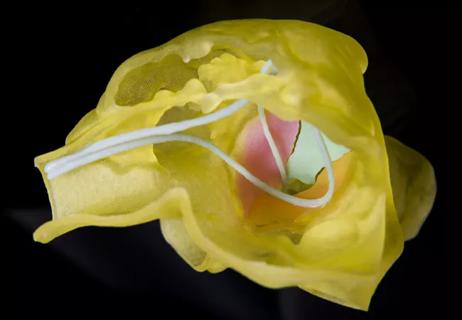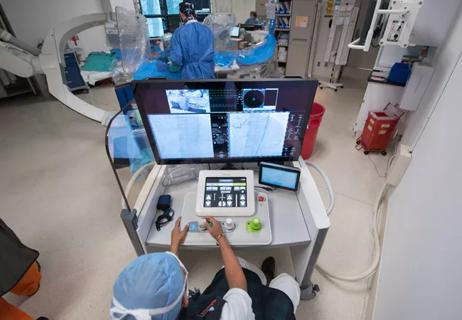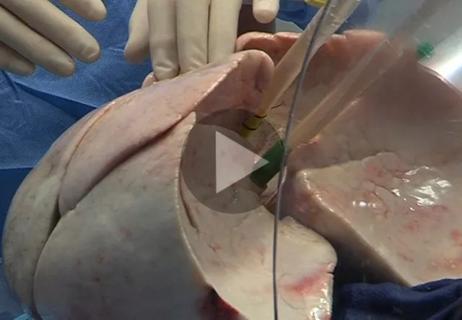Advertisement
Large cohort analysis confirms three aortic aneurysm phenotypes

Only a few decades ago, little was known about bicuspid aortic valves and their impact on cardiovascular health. Today, we know that they are quite common and frequently associated with aneurysms of the thoracic aorta. Many of the details of that association have been unclear — until now.
Advertisement
Cleveland Clinic is a non-profit academic medical center. Advertising on our site helps support our mission. We do not endorse non-Cleveland Clinic products or services. Policy
Using data derived from Cleveland Clinic’s large repository of aortic surgery patients and novel statistical techniques, a research team led by cardiothoracic surgeon Eric Roselli, MD, has identified associations between certain bicuspid aortic valve morphologies and three types of aortopathy. These insights, published in the Journal of Thoracic and Cardiovascular Surgery earlier this year (2018;155:461-469), were achieved by applying complex statistical algorithms to case details in Cleveland Clinic’s large surgical and imaging databases.
“For the first time, we have established a statistical relationship between the shapes of bicuspid valves and the patterns of aortic aneurysms,” says Dr. Roselli, The Stephens Family Endowed Chair in Cardiothoracic Surgery and Surgical Director of Cleveland Clinic’s Aorta Center. “This study was made possible by collaboration among specialists in many fields, including statisticians applying novel and sophisticated machine-learning techniques.”
Bicuspid valves are the most common congenital heart malformation, affecting roughly 1 to 2 percent of the population and dramatically increasing risks of aortic stenosis and aortic regurgitation. One bicuspid leaflet is usually formed by the embryonic fusion of two tricuspid leaflets. Bicuspid valves may be stenotic or regurgitant to varying degrees. They tend to eject blood in flow patterns that stress the proximal aorta differently than in patients with tricuspid aortic valves. These hydrodynamics — probably combined with genetically triggered weakness of the aortic wall — can result in the dilatation or stretching of the great vessel.
Advertisement
Previous studies have suggested the presence of various patterns of aneurysm formation in the proximal aorta in patients with bicuspid valves. This study set out to confirm the presence of distinct phenotypes of aneurysm formation and assess whether these patterns were linked to variations in the shape of the bicuspid valve.
Cleveland Clinic has the world’s largest experience in aortic surgery. The team drew upon de-identified patient records to isolate 656 patients with bicuspid aortic valves who had ascending aorta surgery over a 12-year period. Using patients’ three-dimensional CT reconstructions, the researchers measured diameters at eight different aortic landmarks along the length of the proximal aorta to enable categorization of the aneurysms.
To categorize the bicuspid valves, they relied on reports of intraoperative inspection and preoperative imaging. Valves were classified according to bicuspid fusion pattern, including the number and location of specific fusion points. These data were supplemented by echocardiography review.
The team applied unsupervised clustering algorithms to the collected data. This method finds similarities in uncategorized data and then groups similar data points. It allows processing of a large number of variables to uncover underlying patterns without imparting predetermined assumptions upon the data.
The algorithms identified three aneurysm phenotypes: (1) primarily involving the aortic root, (2) primarily involving the ascending aorta or (3) extending well into the aortic arch (Figure). Each phenotype was associated with specific patient characteristics and valvular dysfunction.
Advertisement
For instance, patients with aortic stenosis were found to be more likely to have aneurysms of the ascending and arch patterns. Those with severe valvular regurgitation were more likely to have dilatation of the aortic root. Patients with the root phenotype were more likely to be taller and younger, while those with the arch phenotype were older and more often had right and noncoronary cusp fusion versus the more common right and left cusp fusion pattern. The location of the pathophysiology did not seem to be affected by preoperative comorbidities such as hypertension, smoking, diabetes or heart failure.

Figure. The three aortic aneurysm phenotypes. (Left) Root, with the portion at the sinuses of Valsalva larger than the tubular ascending aorta. (Middle) Ascending, with the root intact and the origin of the brachiocephalic artery smaller than the sinotubular junction. (Right) Arch, with the root intact and the origin of the brachiocephalic artery equal to or larger than the sinotubular junction. Arrows indicate the blood flow out of the bicuspid aortic valve and the impact it has on the aorta, which is dependent on the aortic cusp affected.
“Previous studies have identified one or more of these phenotypes,” says Dr. Roselli, “but ours was the first to make an unbiased confirmation of all three phenotypes based on unsupervised machine-learning methodology and patients’ specific clinical characteristics.”
A secondary result of the study is a set of rules that may be applicable for the visual classification of the three phenotypes based on CT or MRI studies. “By applying simple visual classification rules, we were able to obtain excellent concordance with the machine-learning results,” Dr. Roselli observes.
Advertisement
He adds that these results represent an initial step toward defining the potential risk of aneurysm for patients with specific bicuspid morphologies. For instance, he says, the findings suggest a genetic etiology for root aneurysms since patients with the root phenotype were younger and almost exclusively male. This bolsters the case for close follow-up of young male patients with regurgitant bicuspid valves, as they may be genetically predisposed to structural aortic wall weakness. Additionally, this information may guide intraoperative treatment decisions. For example, the presence of right and noncoronary cusp fusion and aneurysm may prompt greater aggressiveness in pursuing a hemi-arch resection during surgery.
“In time, this type of information may help guide decision-making around the timing and extent of surgical intervention,” Dr. Roselli concludes.
Advertisement
Advertisement

Patient-patient network analysis proves to be fast and clinically intuitive

How we’re using a new multidisciplinary approach to broaden the benefits of ablation

Models developed with promising accuracy and generalizability to clinical practice

Illustrated case series profiles a valuable tool for a rare and complex entity

A minimally invasive, single-incision approach to two coexisting problems

A long-overdue technology is poised to reshape practice

A short video portrait and overview of our experience to date

A glimpse into our centralized monitoring strategy and more